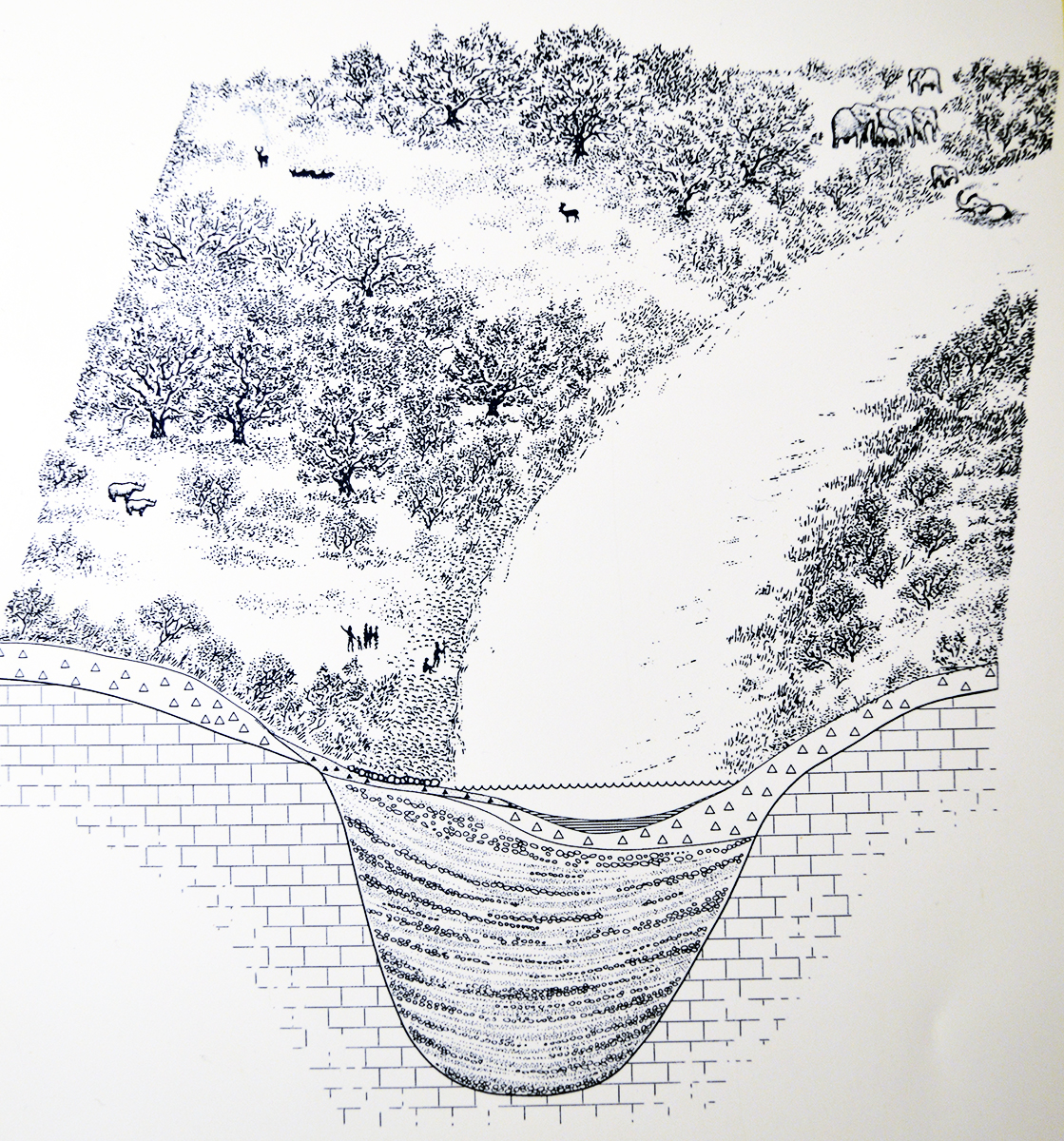
East Farm, Barnham has been known since the late 19th with excavations in the 1930s (Paterson 1937), 1978 (Wymer 1985) and from 1989-94 (Ashton et al. 1998). The site consists of silts and clays that infill a basin in Anglian till and associated glaciofluvial gravels. It has been attributed to the Hoxnian interglacial (MIS 11c) due to its stratigraphic position (Lewis 1998), amino acid ratios (Bowen 1998; Preece and Penkman 2005) and the biostratigraphy of the mammalian fauna (Parfitt 1998). The main archaeological industries were recovered from a lag gravel (unit 4) and overlying silt (unit 5e) at the edge of the basin. A non-handaxe assemblage was recovered in units 4 and 5e from Area I, while an assemblage containing handaxes was recovered from unit 4 in Area IV(4). Biological data has not survived in these marginal sediments. However, the stratigraphy suggests that they are contemporary with the much thicker sequence of silts and clays in the centre of the channel (unit 5c), which contains pollen, molluscs, vertebrates, and occasionally artefacts (Area III). The palynology suggests a mix of open grassland with deciduous, oak woodland and is typical of a Hoxnian zone II (HoII) assemblage. The molluscs and fish remains reflect still or slow-flowing water within a channel. The rich herpetofauna indicates a mosaic of wetland and dry-ground habitats with thermophiles suggesting warmer summers than Britain today (Holman 1998). The fluvial sediments in both the archaeological and environmental areas are sealed by a palaeosol that show a drying-out of the channel.
Archaeological Summary
Artefacts from 1989-94 excavations
Area |
III |
I |
I |
I |
IV(4) |
Context |
Unit 5c |
Unit 4 |
Unit 5e |
Unit 6 |
Unit 4 |
Handaxes/roughouts |
0 |
0 |
0 |
1 |
2 |
Flake tools |
1 |
16 |
30 |
0 |
7 |
Cores |
3 |
58 |
27 |
0 |
31 |
Soft hammer flakes |
0 |
0 |
0 |
0 |
268 |
Hard hammer flakes |
12 |
428 |
600 |
2 |
316 |
Cut-marked bone |
1 |
0 |
0 |
0 |
0 |
|

